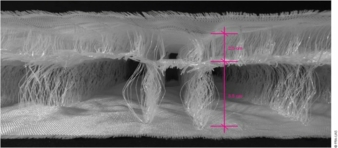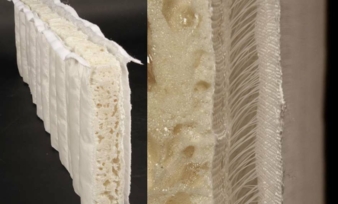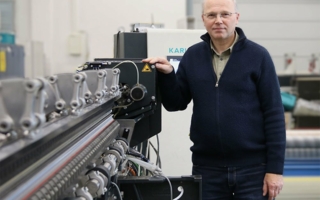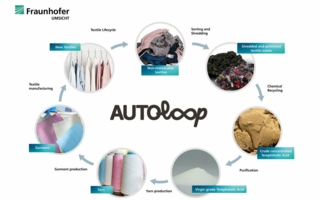23/11/2017 – DITF — auf Deutsch lesen
Textile lightweight construction „3dTEX“
A fascination for textile technologies and their applications in architecture was the inspiration and starting point for the 3dTEX research project.
The possibilities of arranging fibers in a wide variety of materials in space and surface, and foaming them out with related materials, seem almost unlimited. In combination, multilayered spacer textiles prove to be all-rounders in the outer shell of a building and wall elements.
Combining architectural design and structural functionality
The project, which was funded by the Zukunft Bau research initiative, was aimed at developing alternatives to common single-wall lightweight wall elements such as sandwich panels and additional multi-shell wooden stand constructions. Through the production of the textile structure and filling it with foam, the elements should demonstrate the maximum possible mechanical and physical functionalities in an integrated industrial operation.
New approaches for foamed textile constructions
Initial measurements show that the composite of textile fibers and foam results in mechanically better values than their single components. It was also possible to demonstrate that combining textile technologies with foaming methods has the potential for gradient material, in which foam pores are more densely packed in the area of the cover layers and the pile threads than in the free space. A further manufacturing-technological advantage is the design potential of spacer textiles as lost formwork. Since these textiles can be produced very precisely, together with the shaping foam, it is possible to form flat to very three-dimensionally shaped structural elements. The choice of material is decisive for all applications. Depending on the fiber and foam material, the flexible, designed spacing structure opens up a wide range of possibilities for producing novel lightweight construction elements for the building industry.
Based on spacer fabrics, the German Institute for Textile and Fiber
Research (DITF), jointly with the Frankfurt Research Institute at the Frankfurt University of Applied Sciences (FFin), developed design concepts for multi-layer textile building shells made of lightweight elements. Threelayered spacer fabrics have been developed as samples, in which the foamed lower spacing layer fulfills the support and insulation functions, while the second non-foamed layer stretches over as a textile rear ventilation plane, thus protecting the foamed areas from moisture and UV radiation.
The prototypes displayed constitute an ideal combination of lightness and stability, which allows future components to have particularly interesting qualities of creative charm and physical interaction due to the degrees of freedom of gradually coordinated fiber constructions and foam densities.
The fibers absorb the tensile forces in the lightweight composite; the foam absorbs the compressive forces. The cavity provides for rear ventilation, the foam insulates. In this way, the architectural design combines with coordinated construction functionality. The mechanical and constructional physical properties of the component can be varied with the structurally differentiated spacer fabric. Besides, a material-homogeneous selection of fibers and foams makes it a readily recyclable facade material. With appropriate in-situ foams, high-quality industrially produced spacer fabrics can in future be produced with minimal transport requirements, into which further functions can be integrated. They are thus ideal for temporary buildings. An emergency shelter designed in this way was awarded the AED Neuland Award 2017.





